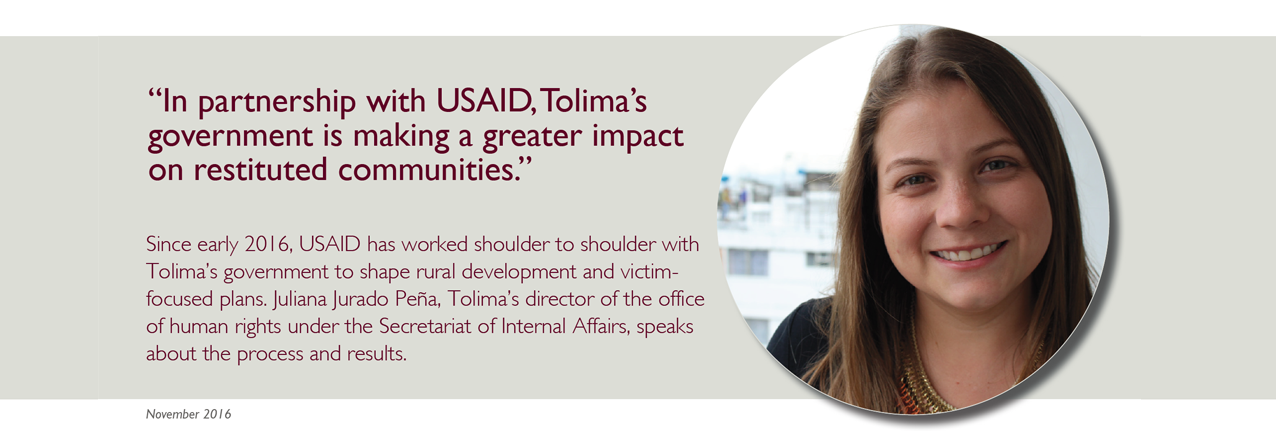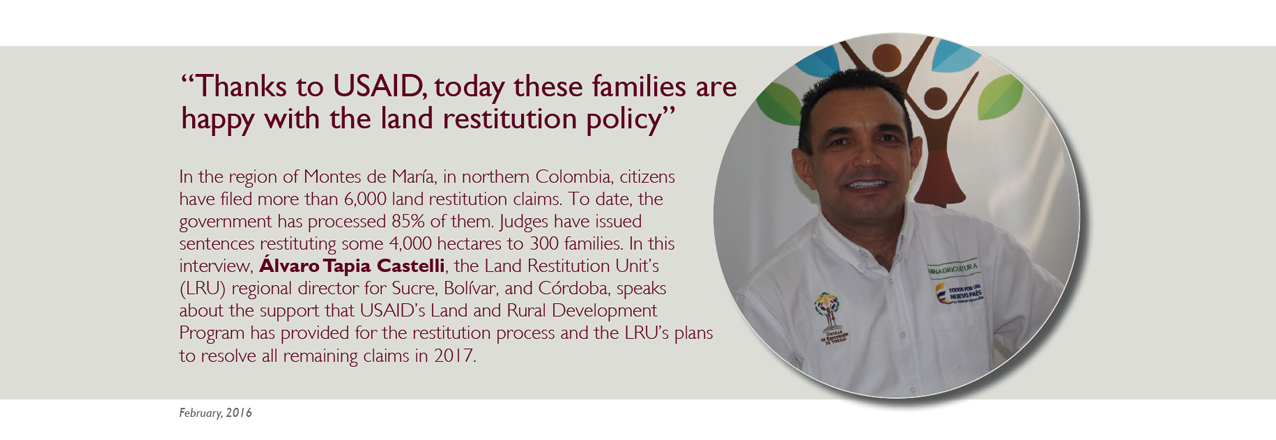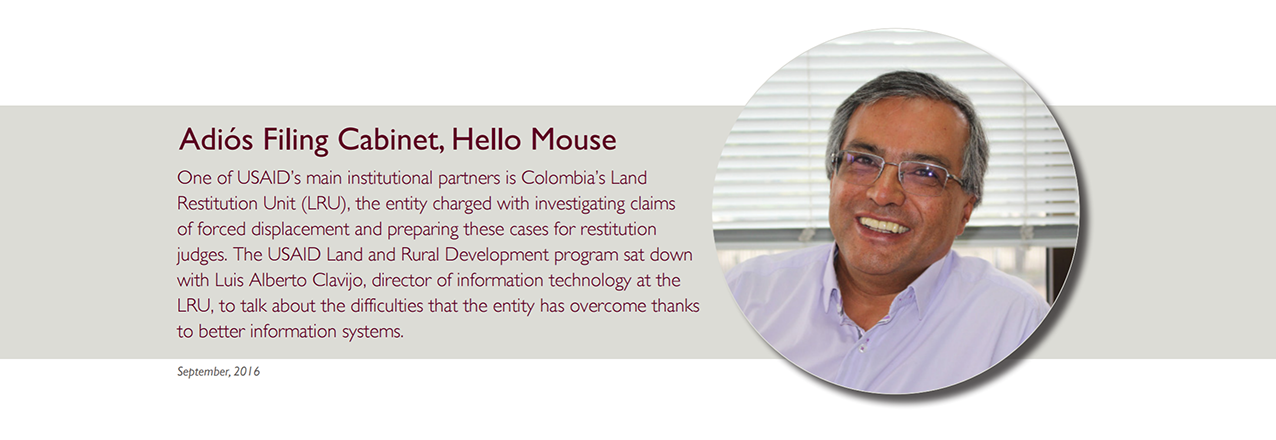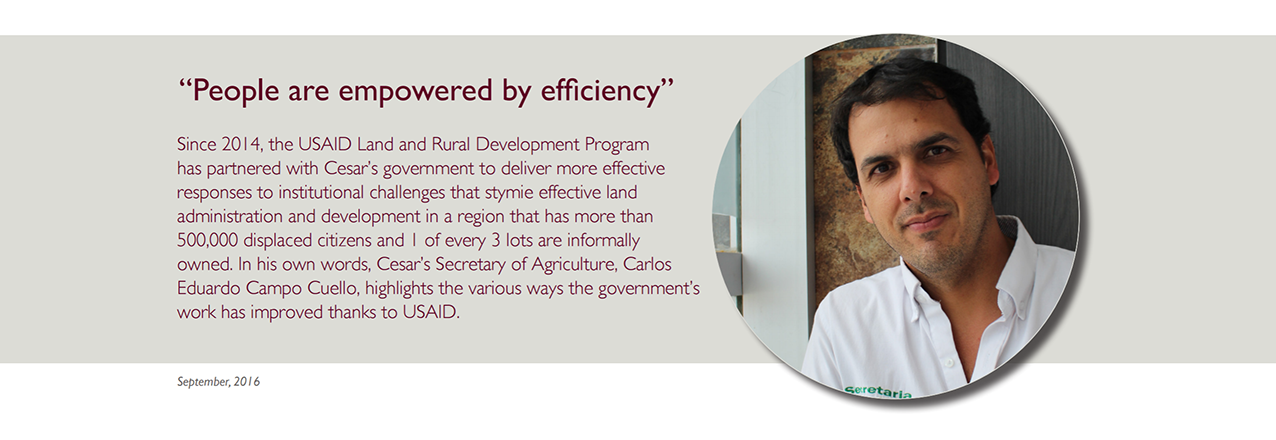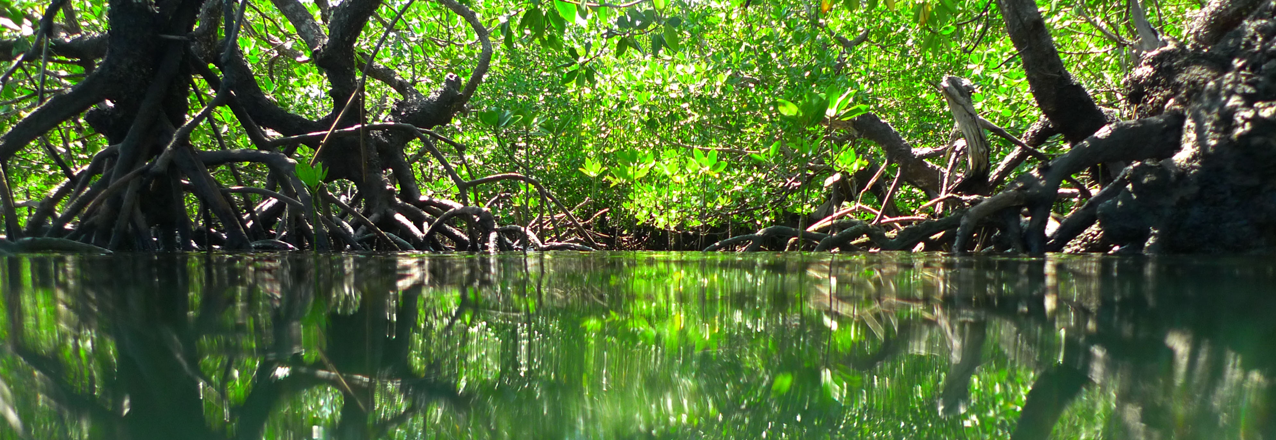Since early 2016, USAID has worked shoulder to shoulder with Tolima’s government to shape rural development and victim-focused plans. Juliana Jurado Peña, Tolima’s director of the office of human rights under the Secretariat of Internal Affairs, speaks about the process and results.
Tell us about the importance of territorial action plans and their relationship with land administration.
Territorial action plans specify the actions that departmental and local governments are planning to undertake with the aim of promoting compliance with Colombia’s Victims Law. Tolima is home to more than 160,000 victims who are eligible for reparations through technical assistance, truth and justice, and guarantees of non-repetition. The territorial action plan is connected to Tolima’s development plan—if we don’t incorporate comprehensive assistance for victims, we won’t be able to provide the right solutions to ensure development and progress.
How has your collaboration with USAID’s Land and Rural Development Program affected the Tolima government’s capacity to handle the restitution process and compliance with restitution rulings in particular?
Together with USAID, we have helped Tolima’s government achieve a greater impact for restituted communities. Thanks to USAID’s support, we’ve developed various mechanisms that allow the departmental government a clearer idea of the steps involved in complying with restitution rulings and in achieving objectives that go beyond simply placing victims back on their land.
What did the government’s process used to be like in terms of complying with restitution rulings?
Before, our staff didn’t have the appropriate knowledge of the range of actions that could and should be undertaken with regard to restitution rulings. Through technical round-tables and workshops coordinated by USAID, each secretariat within Tolima’s government has established a liaison responsible for guiding the restitution rulings within that office. This person is responsible for coordinating actions with other secretariats and public entities.
Which secretariats?
All of them. Tolima has 12 secretariats and four centralized entities. Each one of these now has a person in charge of following up on restitution rulings and reporting on progress. At the beginning, many of our secretariats thought that restitution didn’t have anything to do with them. We have advanced a great deal, changing this paradigm and creating pathways that identify each secretariat’s role in a given restitution ruling.
Has USAID helped Tolima’s government improve its own internal coordination?
Yes. Before, judicial rulings fell directly to the Secretariat of Internal Affairs, where they were handled by the human rights office. Actions were not coordinated. Today, we have a unified approach and the agreed-upon pathways. All of the secretariats now have the ability to lend a hand where needed: agricultural development, health, education, economic development, infrastructure, and others.
How is the Tolima government applying this new capacity to coordinate the actions to ensure restitution rulings?
Take the Secretariat of Agricultural Development, for example, which has agriculture projects in value chains that respond to the reality of local residents. If we don’t provide permanent technical assistance to these projects, they will fail, and the beneficiaries could once again be forced to leave their lands.
Geographically speaking, where has this coordinated approach been applied?
In the municipality of Ataco, for example, the issue of restitution is very strong. There, we are strengthening the cacao and coffee value chains, also with USAID’s help. In addition to providing agricultural technical assistance, Tolima’s government is developing an agreement with Bancoldex in order to open up microcredit opportunities. The government also supported coffee growers’ participation in a specialty coffee fair, where the coffee from Planadas won an award of excellence. This strategy creates visibility and opens up new markets for Tolima’s coffee growers; meanwhile, the farmers improve their productivity and the quality of their beans.
How do you decide which resources should go to these programs or to compliance with restitution rulings?
Here, too, we have enjoyed a lot of support from USAID—with its mentoring, we have been able to better identify and coordinate, both internally and externally, a budget for compliance with restitution rulings. Previously, Tolima’s government had between 50 and 100 million pesos (US$20,000-40,000) allocated for restitution rulings. Today, for the first time ever, we have around 2 billion pesos (US$800,000) allocated specifically for such rulings. The resources are our own, but they are being better managed.
How do you communicate with restituted families and individuals in order to coordinate support for them? Through a phone call?
The procedures that we’ve developed together with USAID in order to ensure compliance with restitution rulings include communicating with restituted families to establish a connection and include them within the departmental government’s programs. Then, we begin to work with local entities, such as mayor’s offices. We let these offices know that such-and-such family is going to be arriving to their land and that there are X number of minors, and that they need to be covered in terms of education, health, and other programs offered within that municipality.
If a restituted family were to visit your office today, what would you say to them?
Beyond what I would say to them, I would show them concrete actions so they feel that their rights which have been violated are now being restored—so they feel that the door is being opened for them to become part of society again. The message and policy of this government is that solutions and transformations are achieved through actions and that we’re building a social fabric that enables people to pick themselves up again.


